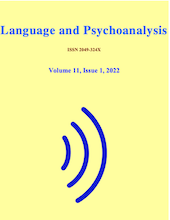Is it Possible to Represent the Sexual Relation in Cinema?
[Est-il possible de représenter le rapport sexuel au cinéma?]
DOI:
https://doi.org/10.7565/landp.v11i1.6455Abstract
This article offers a reflection on the Lacanian theory of the representation of the sexual relation in film. It draws on the Lacanian logic of sexuation and its interpretation by Joan Copjec and Slavoj Žižek, analyzing what the author calls the cinematic non-relation, taking as an example Alfonso Cuarón’s film Y tu mamá también (2011). The article begins by returning to the work of Laura Mulvey, who was one of the first theorists to use psychoanalysis as a political weapon to challenge the phallocentric portrayal of women in Hollywood cinema. The author argues that Mulvey was correct in her conclusions, however not with regard to the production of a “ male gaze”, but rather with regard to the cinematographic construction of male desire, which is a constitutive element of patriarchal society. The author argues that it is not by creating an “alternative” cinema, but rather developing critical theory, itself, as a political weapon that we are able to challenge the dominant ideology. It is the practice of theory that politicizes cinema and the spectator, rather than the reverse.








